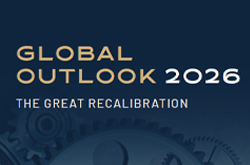Japan: is this time different?
Monthly House View - August/September 2023 - Download here
3% is the level of US inflation over one year in June. Although it is still above the Federal Reserve’s (Fed) target of 2%, it has fallen back to March 2021 levels. Has the Fed succeeded in its impossible mission of taming rising prices without sending the economy into recession?
By aggressively raising its key rates by 5% over just a year, the Fed has succeeded in taking this first step, and the inflation peak that had exceeded 9% in mid-2022 is now behind us. The energy component is now making a negative contribution over the year, which explains why inflation adjusted for the most volatile elements is still high. The Fed has won a battle, but not yet the war. The good news is that the spectre of recession is receding; the US economy is still creating 200,000 jobs a month. Historically, a US recession is systematically preceded by job creation of around 100,000 in the three to six months preceding the economic contraction.
It must be said that in order to emerge from the COVID-19 crisis and get the economy moving again, the United States put 26% of GDP on the table, twice as much as the Euro Area. According to the International Monetary Fund (IMF), 80% of post-COVID inflation in the United States was due to overheating, compared with just 6% in Europe. Today there is convergence between the two sides of the Atlantic, with inflation mainly linked to the price of local services.
While the challenge for the Fed and the European Central Bank (ECB) in the second half of the year will be to set a maximum pivot rate, probably around 5.5% and 4% respectively, the situation is quite different for the emerging countries. These countries were the first to raise rates. They are, once again, ahead of the developed countries in lowering rates, particularly in Latin America and Eastern Europe. Moreover, in Asia, the spectre of deflation looms over China, which is exporting less as the global economy slows. In June, factory gate prices in the Middle Kingdom fell by 5.4% year-on-year. Against this backdrop of mixed growth, the Chinese authorities are likely to decide to introduce measures to support activity, notably by cutting interest rates.
We still believe that the impact of the rate hikes of recent months will take longer to spread and materialise in the global economy. This is because the backlash against COVID-19, which partly justified the rate hikes, was accompanied by strong stimulus packages in many countries.
We are scrutinising all the weak signals that are already accumulating:
- The difficulties which faced pension funds in the UK at the end of 2022.
- The collapse of Silicon Valley Bank which sent shockwaves through the market last March. However, on the evidence of the first US bank results for the second quarter, that event too seems to be behind us.
- Recently, the UK utility sector, particularly the water one, which is now facing some financing difficulties. As they have issued large amounts of so called “inflationlinked bonds”, the significant increase in UK inflation is directly leading to sharp increases in their debt servicing. At over GBP 40 billion in size, the UK market for inflation-linked corporate bond is the largest in the world.
What these three events have in common is that companies have failed to anticipate the impact of a sudden rise in inflation and interest rates on the management of their investments and debt. It is true that we are coming out of a 15-year period of low or even negative interest rates.
What will make the central banks’ perilous mission possible is the use of the right tools at the right time, and the same applies to investors when it comes to their asset allocation. Today, the volatility of certain markets, such as equities, is very low, and this should not make us less vigilant. There are major contrarian positions on US debt, with speculative players anticipating a continuation of the uptrend in interest rates, while institutional investors are taking the opposite view. Again, this leaves us with some excellent opportunities to seize, enabling us to make the most of the forthcoming six-month period.
Monthly House View, 21/07/2023 - Excerpt of the Editorial
July 28, 2023




